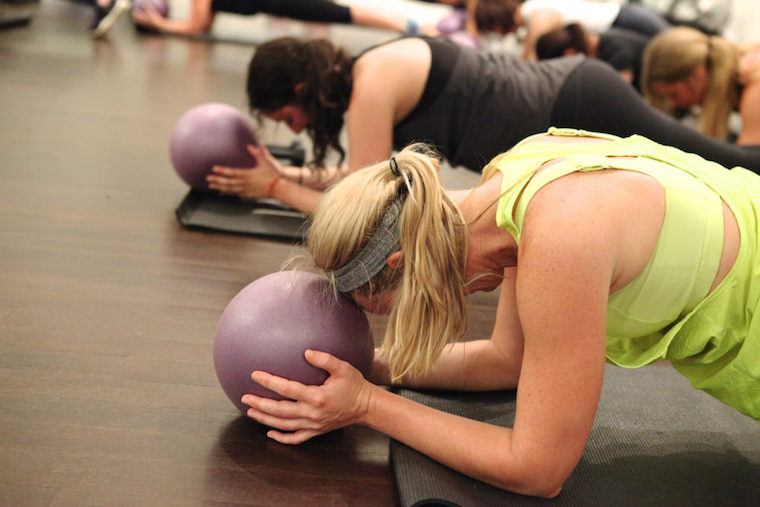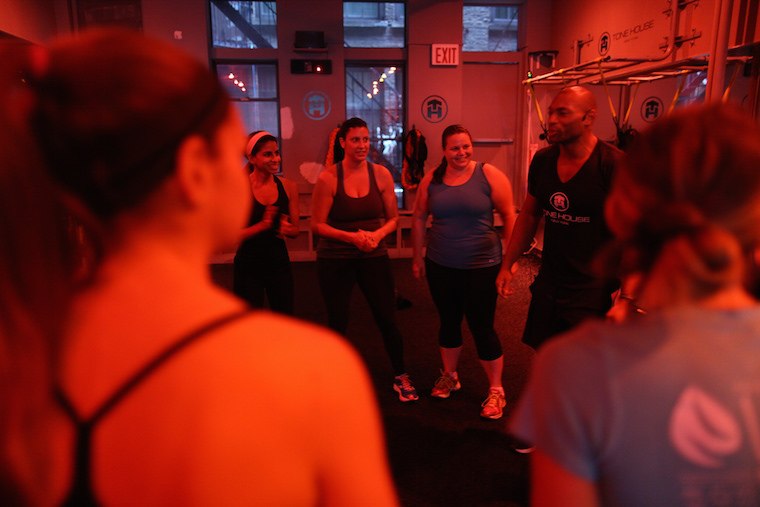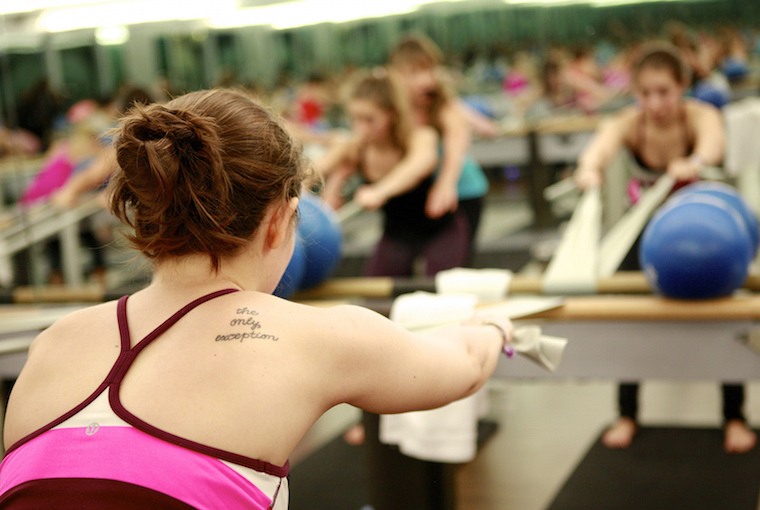The monumental increase in partner studios and gyms (9,000 were added in the past year, rounding out to over 15,000 total) is just one of the many, many things that's changed about the boutique fitness membership platform recently, along with the addition of varying class pack options, price hikes, the discontinuation of the Unlimited class plan, and the addition of wellness experiences to the growing roster. The biggest recent change, though, has been the introduction of the "credits" system.
Unlike the original post-unlimited ClassPass model, where your membership afforded you a set number of classes per month (the Core Plan, for example, yielded 10 classes for $135), users are now able to purchase "credits," and can redeem those credits at as many different classes as they'd like. Various classes retail for a various number of credits determined by a "dynamic pricing system": A peak spot at Barry's Bootcamp, for example, could cost 20 credits, while a two-hour slot at Crunch Gym will run you only two or three.
“We work tirelessly in support of our mission to inspire people to live their most active lives. Iteration and innovation are core to our DNA, so we’re constantly seeking new ways to connect our members seamlessly to fulfilling experiences," Payal Kadakia, Founder & Chairman of the Board at ClassPass, tells Well + Good. "Since our launch just over five years ago, we've booked over 65 million class reservations on our platforms. That’s 65 million hours of people’s lives we’ve helped enrich and improve by connecting them to nurturing experiences at our 15,000 partner studios worldwide."

{{post.sponsorText}}
Plan prices vary from city to city, but in New York City, you can purchase as few as 27 credits (the equivalent of two to four classes) for $49 a month, 49 credits (approximately four to seven classes) for $75 a month, or 100 credits (which nets out to 10 to 15 classes) for $159. The brand also has a partnership with Blink Fitness in the New York Metro area, where for an extra $15 a month on top of the 49- and 100-credit plans, you can have unlimited access to the gym's various location throughout NYC. If you don't use all of your credits in a given month, up to 10 can roll over into the following, and if you run out, there is always the option to top up whenever you want.
Since that experience could be pretty unrecognizable to someone who was a member five years ago, I gave the $75 a month plan a test drive over the last few months to find out what exactly it's really like to use ClassPass in NYC...right now.
Here are eight things you need to know if you're thinking of using ClassPass to sweat all over town.

1. The selection can be overwhelming (which isn't necessarily a bad thing)
My head nearly exploded when I started browsing the full list of classes—there are so, so many to choose from. But thanks to the filters that ClassPass offers (you can sort by activity, neighborhood, time, and distance from your current location), it made it a lot easier to sort through. I could see it being tough to figure out where to start, especially if you aren't totally familiar with the NYC fitness scene. But the sheer number of options is great for anyone looking to try something new, or mix up their regular routine. Because through trial and error, you can ultimately find something you love. The credits system also makes it easy to figure out which classes are the best—the more credits it requires, the more popular the class likely is.
2. The app is really helpful
ClassPass's app has been around since 2016, and makes sorting through the thousands of studio offerings a whole lot easier than just going in blind. It's really well-designed and easy to navigate and you can filter classes based on exact time, neighborhood, type (barre, spin, etc.), and even whether or not the spot has a shower.
Setting a few parameters makes the selection way more manageable, and it also does a great job at recommending classes based on your past behavior. Finally, it makes it easy to book classes you liked again, allows you to save studios as your favorites, and even includes a map feature that shows classes right near you for last-minute, on-the-go bookings.

3. The credits system makes it easier (but arguably pricier) to get into classes at top studios
It's traditionally been challenging to get spots in ClassPass classes with more cachet (aka the best studios at the most popular times), but the credits system actually helps make it slightly easier...as long as you're willing to pay the price. The best classes will, semi-understandably, cost the most credits. Premium studios like Tone House, Barry’s Bootcamp, and The Fhitting Room, for example, will run you the most credits, except during off-peak times. (If you're a freelancer and can go to classes midday, you're in luck!)
As a user, this makes sense: A popular, premium class with a top trainer probably should cost more than an hour on your own at the gym, which is how the program used to be structured when a membership got you a set number of classes per month regardless of what they actually were. Keep in mind, however, that many of the bigger names aren't on ClassPass at all, like SoulCycle, 305 Fitness, and SLT (unless you're in Philly, where it was recently added), so if these are studios that matter to you, it's probably not the right option.

4. It's a great time to be a barre babe or a spin devotee
The incredible growth of many barre studio brands over the past few years has led to a ton of variety and availability in this realm, and if barre is your workout of choice, ClassPass is a great option. Studios like Physique 57, Pop Physique, FlyBarre, Pure Barre, Barre3, Core Fusion at Exhale, and Bar Method—many at multiple locations—offer credits-friendly classes at peak times. And if you're into spinning, there are plenty of indoor cycling classes available from studios like Flywheel, Cyc, and Swerve to classes at gyms like Crunch.
5. You can use ClassPass to go to the gym, too
It was news when ClassPass added its first gym partner, Crunch, in early 2015. Now, there's a long list of gym partners on board, many with dozens of locations all over the city. Instead of booking a class, for instance, you can snag gym time at Crunch, New York Sports Club, or 24-Hour Fitness. Of course, memberships at all of those spots are cheaper than joining ClassPass, so this feature is only beneficial if you prefer studio classes but just want to hit the gym once in a while. Plus, gym time runs you far fewer credits than a premium class would, so you can arguably get the most bang for your buck if you want to sweat it out on your own.
6. ClassPass Live and ClassPass Go will give you classes without having to go to a studio
In addition to letting you sweat it out at the gym, ClassPass has also hopped on board the digital fitness trend with ClassPass Live and ClassPass Go, which means your monthly membership will give you unlimited access to trainers via your cellphone or laptop. So even if you're only attending a few actual classes a month, you can make full use of your membership by tuning into a live class or on-demand program, straight from your living room.
"By expanding into at-home digital products, we’re able to offer existing members more value and flexibility in how and when they work out, while simultaneously bringing studio-fitness- inspired workouts to a whole new demographic nationwide,” Fritz Lanman, ClassPass CEO, said when the app launched last year. Offerings are mostly HIIT-based and require limited equipment, which make them easy to do wherever you are.

7. The wellness experiences are a game changer
In addition to the usual fitness classes, in 2018 ClassPass added a number of wellness experiences to its offerings. Now, in addition to using your monthly credits on a HIIT class, in NYC you can also apply them to things like cryotherapy, facials, and blowouts. Not a bad deal, huh? And ClassPass Getaways, which will launch later this year, will allow members to book daylong self-care experiences at unique destinations, giving them access to different fitness programs from popular boutique studios, complimentary wellness and beauty treatments, and delicious food. “We’re thrilled to give members the opportunity to take a mini escape from their day-to-day to try new things and explore unfamiliar places,” ClassPass founder Payal Kadakia said when news of the new initiative broke. “It’s our hope that attendees will leave feeling energized and empowered to continue living life to their absolute fullest.”
8. For the right person, it's still a great value
The 40-credit pack, which gives you four to seven classes, now costs $75—netting out to $10-$19 a class. That's a great value considering most classes cost upwards of $30 each at retail value. The credits system also allows you to have access to prime spots at popular classes (unlike back in the day, when it was nearly impossible). If you have favorite instructors at The Fhitting Room and Cyc and will go six days a week without fail—another option might be the best call. But if you're a casual fitness enthusiast who lives to try new things all the time, it's perfect.
With additional reporting from Lisa Elaine Held.
And of course there's the question of what to wear to boot camp vs. barre vs. Bikram. Here's the latest intel on leggings, sneakers, and what to wear underneath.
Loading More Posts...